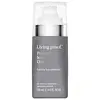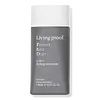What's inside
What's inside
 Key Ingredients
Key Ingredients

No key ingredients
 Benefits
Benefits

 Concerns
Concerns

 Ingredients Side-by-side
Ingredients Side-by-side

Water
Skin ConditioningEthylhexyl Stearate
EmollientPropylene Glycol Dibenzoate
Skin ConditioningPPG-3 Benzyl Ether Myristate
EmollientHelianthus Annuus Seed Oil
EmollientIsohexadecane
EmollientQuaternium-91
Isoamyl Laurate
EmollientPolyquaternium-4
Hydroxypropyl Guar
Emulsion StabilisingHydrogenated Castor Oil/Sebacic Acid Copolymer
EmollientIsododecane
EmollientC13-15 Alkane
SolventLinoleamidopropyl Ethyldimonium Ethosulfate
Linoleamidopropyl Dimethylamine Dimer Dilinoleate
Skin ConditioningAmaranthus Caudatus Seed Extract
Skin ConditioningParfum
MaskingDiisostearyl Malate
EmollientHydroxyethylcellulose
Emulsion StabilisingGlycerin
HumectantPhytosteryl/Octyldodecyl Lauroyl Glutamate
Skin ConditioningSodium PCA
HumectantPCA Ethyl Cocoyl Arginate
MoisturisingArginine
MaskingGlycine
BufferingAlanine
MaskingSerine
MaskingValine
MaskingIsoleucine
Skin ConditioningProline
Skin ConditioningThreonine
Histidine
HumectantPhenylalanine
MaskingHydroxyacetophenone
AntioxidantTrisodium Ethylenediamine Disuccinate
Caprylyl Glycol
EmollientGlycolic Acid
BufferingAspartic Acid
MaskingSodium Lactate
BufferingEthyl Lauroyl Arginate Hcl
Skin ConditioningZea Mays Starch
AbsorbentHydrolyzed Soy Protein
HumectantStearamidopropyl Dimethylamine
EmulsifyingPentylene Glycol
Skin ConditioningGluconolactone
Skin ConditioningPropanediol
SolventCynara Scolymus Leaf Extract
Skin ConditioningCitronellol
PerfumingAlpha-Isomethyl Ionone
PerfumingGeraniol
PerfumingHydroxycitronellal
PerfumingCitral
PerfumingLimonene
PerfumingWater, Ethylhexyl Stearate, Propylene Glycol Dibenzoate, PPG-3 Benzyl Ether Myristate, Helianthus Annuus Seed Oil, Isohexadecane, Quaternium-91, Isoamyl Laurate, Polyquaternium-4, Hydroxypropyl Guar, Hydrogenated Castor Oil/Sebacic Acid Copolymer, Isododecane, C13-15 Alkane, Linoleamidopropyl Ethyldimonium Ethosulfate, Linoleamidopropyl Dimethylamine Dimer Dilinoleate, Amaranthus Caudatus Seed Extract, Parfum, Diisostearyl Malate, Hydroxyethylcellulose, Glycerin, Phytosteryl/Octyldodecyl Lauroyl Glutamate, Sodium PCA, PCA Ethyl Cocoyl Arginate, Arginine, Glycine, Alanine, Serine, Valine, Isoleucine, Proline, Threonine, Histidine, Phenylalanine, Hydroxyacetophenone, Trisodium Ethylenediamine Disuccinate, Caprylyl Glycol, Glycolic Acid, Aspartic Acid, Sodium Lactate, Ethyl Lauroyl Arginate Hcl, Zea Mays Starch, Hydrolyzed Soy Protein, Stearamidopropyl Dimethylamine, Pentylene Glycol, Gluconolactone, Propanediol, Cynara Scolymus Leaf Extract, Citronellol, Alpha-Isomethyl Ionone, Geraniol, Hydroxycitronellal, Citral, Limonene
Water
Skin ConditioningMyristyl Alcohol
EmollientC13-15 Alkane
SolventBehentrimonium Methosulfate
Butylene Glycol
HumectantMaltodextrin/Vp Copolymer
Behenyl/Stearyl Aminopropanediol Esters
Polyalkylaminoester-1
Oleyl Alcohol
EmollientHydroxyethylcellulose
Emulsion StabilisingMyrica Pubescens Fruit Wax
Skin ConditioningAstrocaryum Murumuru Seed Butter
EmollientPolyquaternium-55
Lauryl Methyl Gluceth-10 Hydroxypropyldimonium Chloride
PPG-3 Benzyl Ether Ethylhexanoate
EmollientPPG-2 Myristyl Ether Propionate
EmollientCetyl Alcohol
EmollientOleth-10
EmulsifyingSteareth-2
EmulsifyingSteareth-10
EmulsifyingParfum
MaskingCaprylic Acid
CleansingLauric Acid
CleansingPotassium Sorbate
PreservativePropanediol
SolventCitronellol
PerfumingLimonene
PerfumingCitral
PerfumingMethyldihydrojasmonate
MaskingAmyl Salicylate
PerfumingIonone
AstringentTetramethyl Acetyloctahydronaphthalenes
MaskingCyclamen Aldehyde
MaskingEthylene Brassylate
MaskingCitrus Sinensis Peel Oil Expressed
PerfumingIsopropyl Myristate
EmollientMethylbenzyl Acetate
MaskingIllicium Verum Fruit/Seed Oil
MaskingGeranyl Acetate
Perfuming2,4-Dimethyl-3-Cyclohexene Carboxaldehyde
MaskingWater, Myristyl Alcohol, C13-15 Alkane, Behentrimonium Methosulfate, Butylene Glycol, Maltodextrin/Vp Copolymer, Behenyl/Stearyl Aminopropanediol Esters, Polyalkylaminoester-1, Oleyl Alcohol, Hydroxyethylcellulose, Myrica Pubescens Fruit Wax, Astrocaryum Murumuru Seed Butter, Polyquaternium-55, Lauryl Methyl Gluceth-10 Hydroxypropyldimonium Chloride, PPG-3 Benzyl Ether Ethylhexanoate, PPG-2 Myristyl Ether Propionate, Cetyl Alcohol, Oleth-10, Steareth-2, Steareth-10, Parfum, Caprylic Acid, Lauric Acid, Potassium Sorbate, Propanediol, Citronellol, Limonene, Citral, Methyldihydrojasmonate, Amyl Salicylate, Ionone, Tetramethyl Acetyloctahydronaphthalenes, Cyclamen Aldehyde, Ethylene Brassylate, Citrus Sinensis Peel Oil Expressed, Isopropyl Myristate, Methylbenzyl Acetate, Illicium Verum Fruit/Seed Oil, Geranyl Acetate, 2,4-Dimethyl-3-Cyclohexene Carboxaldehyde
 Reviews
Reviews

Alternatives
Ingredients Explained
These ingredients are found in both products.
Ingredients higher up in an ingredient list are typically present in a larger amount.
C13-15 Alkane is a group of alkanes with 13 to 15 carbon atoms in the alkyl chain.
It is a solvent and texture enhancer. Solvents are used to keep ingredients together in a product. They can help dissolve ingredients to stable bases or help evenly distribute ingredients throughout the product.
Citral is a fragrance and used to add a lemon-like scent to products. It is both naturally found in plants and created synthetically. In plants, it is commonly occurring in lemon myrtle, lemongrass, lemon tea-tree, lemon verbena, and other citruses.
The EU mandates Citral be listed separately as a fragrance. It is a known allergen and may cause contact dermatitis. Citral can also used as a masking ingredient.
The term 'fragrance' is not regulated in many countries. In many cases, it is up to the brand to define this term. For instance, many brands choose to label themselves as "fragrance-free" because they are not using synthetic fragrances. However, their products may still contain ingredients such as essential oils that are considered a fragrance.
The term 'citral' is a collective term for two geometric isomers: geranial/Citral A and neral/Citral B.
Learn more about CitralCitronellol is used to add fragrance/parfum to a product. It is often derived from plants such as roses. In fact, it can be found in many essential oils including geranium, lavender, neroli, and more. The scent of Citronellol is often described as "fresh, grassy, and citrus-like".
Since the Citronellol molecule is already unstable, Citronellol becomes irritating on the skin when exposed to air.
Citronellol is a modified terpene. Terpenes are unsaturated hydrocarbons found in plants. They make up the primary part of essential oils.
Citronellol is not able to be absorbed into deeper layers of the skin. It has low permeability,
Citronellol is also a natural insect repellent.
Learn more about CitronellolHydroxyethylcellulose is used to improve the texture of products. It is created from a chemical reaction involving ethylene oxide and alkali-cellulose. Cellulose is a sugar found in plant cell walls and help give plants structure.
This ingredient helps stabilize products by preventing ingredients from separating. It can also help thicken the texture of a product.
This ingredient can also be found in pill medicines to help our bodies digest other ingredients.
Learn more about HydroxyethylcelluloseLimonene is a fragrance that adds scent and taste to a formulation.
It's found in the peel oil of citrus fruits and other plants such as lavender and eucalyptus. The scent of limonene is generally described as "sweet citrus".
Limonene acts as an antioxidant, meaning it helps neutralize free radicals.
When exposed to air, oxidized limonene may sensitize the skin. Because of this, limonene is often avoided by people with sensitive skin.
The term 'fragrance' is not regulated in many countries. In many cases, it is up to the brand to define this term. For instance, many brands choose to label themselves as "fragrance-free" because they are not using synthetic fragrances. However, their products may still contain ingredients such as essential oils that are considered a fragrance.
Learn more about LimoneneParfum is a catch-all term for an ingredient or more that is used to give a scent to products.
Also called "fragrance", this ingredient can be a blend of hundreds of chemicals or plant oils. This means every product with "fragrance" or "parfum" in the ingredients list is a different mixture.
For instance, Habanolide is a proprietary trade name for a specific aroma chemical. When used as a fragrance ingredient in cosmetics, most aroma chemicals fall under the broad labeling category of “FRAGRANCE” or “PARFUM” according to EU and US regulations.
The term 'parfum' or 'fragrance' is not regulated in many countries. In many cases, it is up to the brand to define this term.
For instance, many brands choose to label themselves as "fragrance-free" because they are not using synthetic fragrances. However, their products may still contain ingredients such as essential oils that are considered a fragrance by INCI standards.
One example is Calendula flower extract. Calendula is an essential oil that still imparts a scent or 'fragrance'.
Depending on the blend, the ingredients in the mixture can cause allergies and sensitivities on the skin. Some ingredients that are known EU allergens include linalool and citronellol.
Parfum can also be used to mask or cover an unpleasant scent.
The bottom line is: not all fragrances/parfum/ingredients are created equally. If you are worried about fragrances, we recommend taking a closer look at an ingredient. And of course, we always recommend speaking with a professional.
Learn more about ParfumPropanediol is an all-star ingredient. It softens, hydrates, and smooths the skin.
It’s often used to:
Propanediol is not likely to cause sensitivity and considered safe to use. It is derived from corn or petroleum with a clear color and no scent.
Learn more about PropanediolWater. It's the most common cosmetic ingredient of all. You'll usually see it at the top of ingredient lists, meaning that it makes up the largest part of the product.
So why is it so popular? Water most often acts as a solvent - this means that it helps dissolve other ingredients into the formulation.
You'll also recognize water as that liquid we all need to stay alive. If you see this, drink a glass of water. Stay hydrated!
Learn more about Water